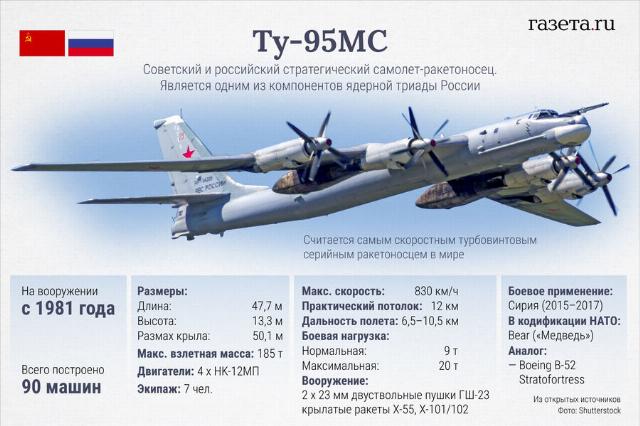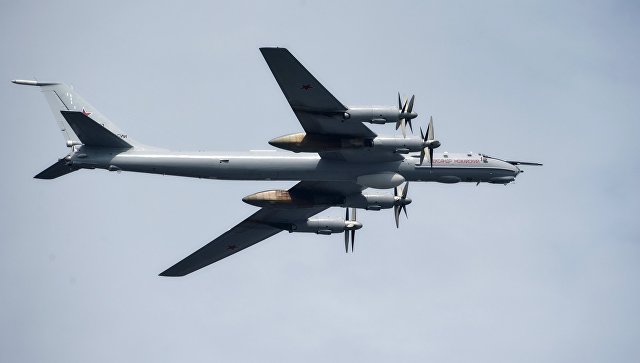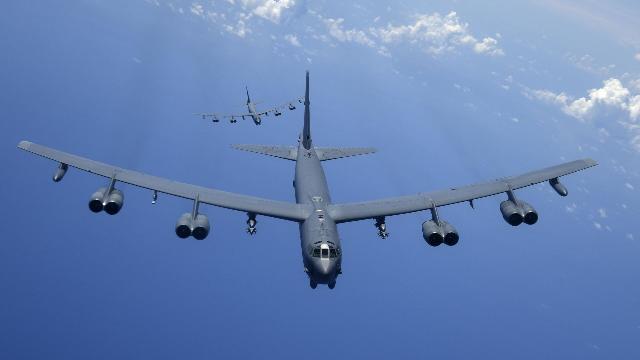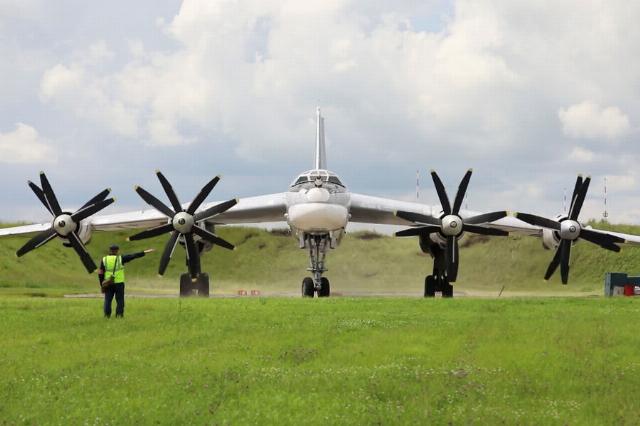What is the Tu-95MS missile carrier aircraft?
The Tu-95MS is a Soviet and Russian missile carrier aircraft, which was created as a carrier for long―range strategic cruise missiles. It is part of strategic aviation, one of the components of Russia's nuclear triad, and is considered the world's fastest turboprop serial missile carrier. It is designed to launch nuclear strikes against the most important enemy targets. In the NATO codification, these aircraft were named "Bear".
Technical characteristics of the Tu-95MS
The Tu-95MS is an all-metal monoplane with a swept wing located in the middle of the fuselage. It has four powerful turboprop engines with four-bladed propellers. The thrust of each engine is 15 thousand horsepower.
The missile-carrying aircraft can reach speeds of up to 830 km/ h and carry a combat load of up to 20 tons.
The aircraft carries six such missiles in a drum launcher in the fuselage, and another 10 can be placed on pylons under the wings. It can also be equipped with two GSH-23 double-barreled 23 mm cannons. It is capable of carrying naval air mines as a strike weapon.
 |
| The Tu-95MS infographic. |
| Source: Alina Djus/Gazeta.Ru» |
History of creation
The Tu-95MS is an upgraded version of the Soviet Tu-95 intercontinental bomber, which entered service in 1957. Unlike the basic model, the Tu-95MS was designed for long-range cruise missiles X-55.
The experienced Tu-95MS took to the skies for the first time in September 1979. After the completion of tests and improvements in 1981, it was put into mass production and put into service. In 1992, after the production of 90 aircraft, mass production was stopped. There is currently a program in place to modernize and extend the service life of existing machines.
PJSC Tupolev and PJSC Beriev TANTK (part of Rostec) are engaged in the modification of this model. The Tu-95MSM (an upgraded version of the Tu-95MS) made its first flight in August 2020.
 |
| The Tu-95MS strategic bomber-missile carrier. Archive photo. |
| Source: © RIA Novosti / Alexey Danichev |
A more modern navigation computer system was installed on the bomber, as well as an integrated control system. The missile carrier should also receive new optical and radio intelligence capabilities.
Combat use
The Tu-95MS can be used not only for nuclear deterrence purposes, but also as an effective weapon in modern local conflicts.
For the first time, the Tu-95MS demonstrated its combat qualities in November 2015, launching a missile and bomb attack on Islamic State targets in the Syrian provinces of Aleppo and Idlib. During the Syrian campaign, Tu-95MS aircraft were also used in 2016 and 2017.
However, for most of its history, the Tu-95MS was used in patrolling the borders of Russia, including scheduled flights over neutral waters escorted by MiG-31 fighter jets.
The American equivalent
According to its data, the Tu-95MS is comparable to the American strategic bomber Boeing B-52 Stratofortress, which has been in service in the United States since 1955. The B-52 can also carry nuclear weapons. A total of 744 aircraft were created, the last of them (in the B-52H modification) was delivered to the troops in October 1962.
 |
| Two B-52H Stratofortress strategic bombers of the United States Air Force. |
| Source: © Photo : U.S. Air Force / Airman 1st Class Gerald Willis |
Despite the general similarity, the planes differ in engines. The B-52 has eight TF33 turbojet engines manufactured by Pratt & Whitney, which allow the aircraft to reach high speeds (up to Mach 0.86, or about 1054 km/ h) and fly longer distances (about 14.2 thousand km). In addition, the B-52 has a higher bomb load ceiling - according to the developer, the machine is capable of carrying 31.5 tons of various ammunition.
Over several decades of operation, the B-52 has managed to replace several sets of target equipment and a number of generations of aviation weapons. A new modernization is currently underway, as a result of which the aircraft will improve its combat capabilities.
Vadim Verpeta

